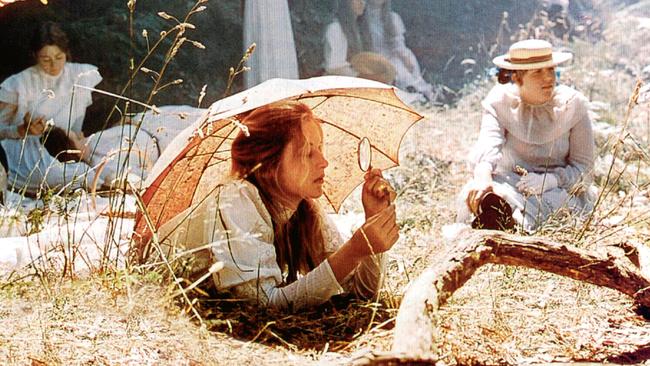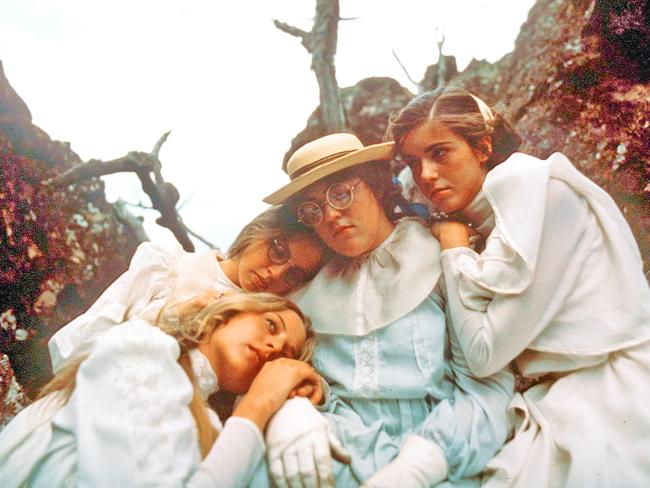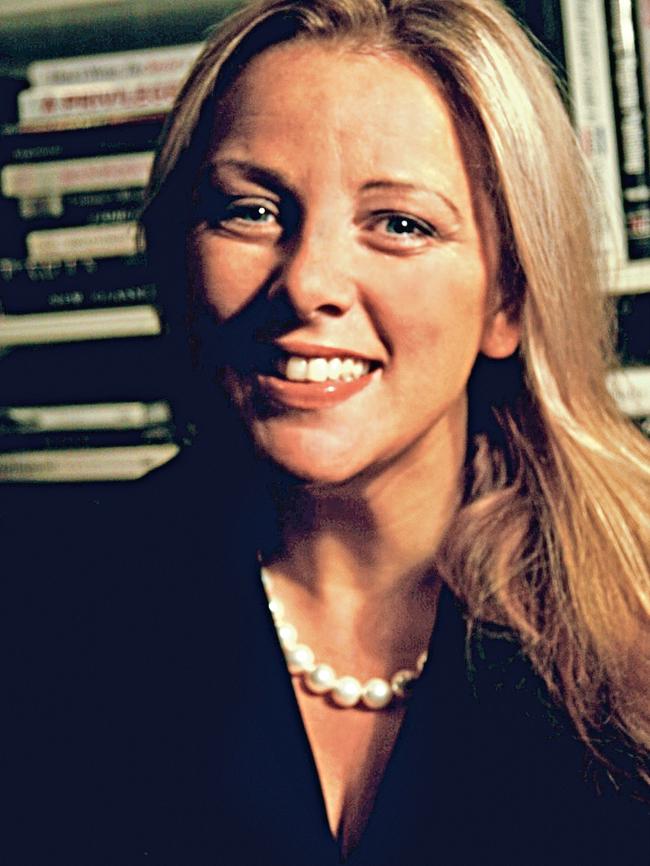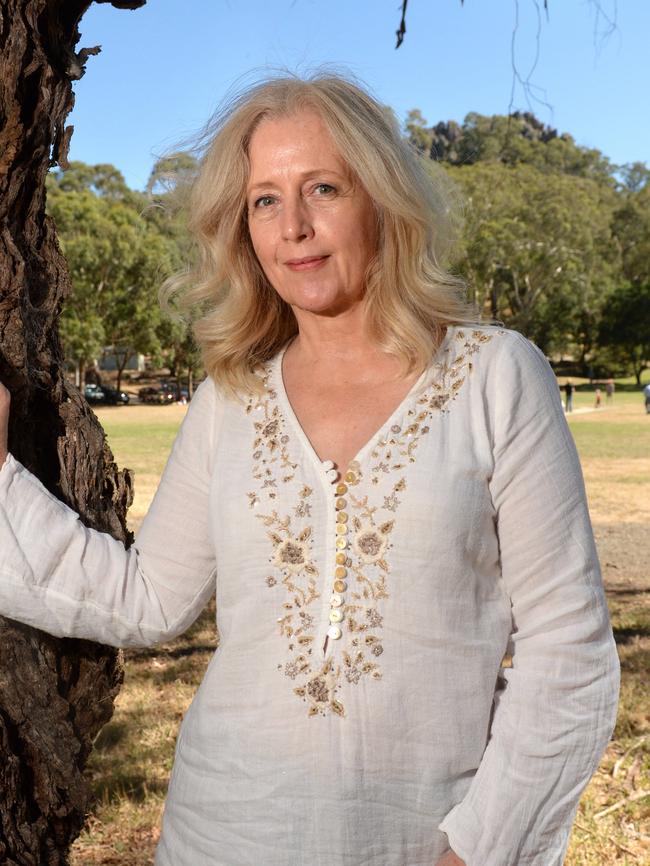Picnic At Hanging Rock: A mystery still unsolved
ON THE 50th anniversary of the publication of the famous Australian novel, new research uncovers historical evidence suggesting the story might have been true all along.

Stellar
Don't miss out on the headlines from Stellar. Followed categories will be added to My News.
IT WAS the sort of suitably unnerving moment a fan of the book might have expected to transpire when an audience gathered at Melbourne’s State Theatre in 1975 for the Victorian premiere of the film adaptation of Picnic At Hanging Rock.
“The theatre clock mysteriously stopped right on 12,” says author Janelle McCulloch, who has written a new book about Joan Lindsay, the woman behind the fictional mystery.
It wasn’t the first time such a thing had happened. Odd occurrences and coincidences were a feature of the late Joan Lindsay’s life. Lindsay, who wrote the beloved Australian novel at the age of 69, often referred to clocks stopping in her presence. When the film of the story was made almost a decade later, the set wasn’t immune. Co-producer Patricia Lovell reported, “All our watches seemed to be playing up. Mine stopped at 6pm on the rock… to ask the time became quite a joke.”

The story and its hauntingly beautiful film, directed by Peter Weir, have beguiled audiences the world over. Its influence has permeated fashion (designers Alexander McQueen and Raf Simons of Dior, and actor and fashion muse Chloë Sevigny have cited it as inspiration), as well as film (The Virgin Suicides). Such is the tale’s enduring appeal that Foxtel is filming a remake this year.
The great mystery of Picnic At Hanging Rock remains. Or rather, mysteries. For two questions lie at the heart of both the legend and its continued popularity: is the story true? And, if it is, what on earth happened to those girls?
In the course of writing Beyond The Rock: The Life Of Joan Lindsay And The Mystery Of Picnic At Hanging Rock, McCulloch’s research uncovers historical evidence for the story’s truth, while some elements of the tale still remain tantalisingly unexplained.
“My own feeling is that two girls were abducted.”
The year is 1900, the location Appleyard College, a private girls’ school near Melbourne. On St Valentine’s Day, the pupils have a picnic at nearby Hanging Rock.
A group of girls go to explore the rock and, along with a teacher, three never return. One girl is found alive, but can offer no clues; the others disappear without trace.
Like many Australians, McCulloch has long been fascinated and frustrated by the mystery. She has spent many years sifting through archives and interviewing descendants in search of an answer. As with any good thriller, the plot thickened the further she delved.

In her research, McCulloch unearthed a number of stories that fuelled her hunch there was more to this mystery than a simple tale of fiction. She found the final two lines of Lindsay’s original foreword, “For the author, who knew Mount Macedon and the Hanging Rock very well, as a child, the story is entirely true,” had been deleted before the novel’s publication. Why would Lindsay write this line if the story were fictional?
She also tracked down an ex-student of the school the fictional Appleyard College was based on. Now 100 and living in London, the woman told her, “We all knew about the girls who disappeared, but none of us really knew the details.”
“It was then that I found out that Joan’s great-grandfather was the police magistrate in the area,” says McCulloch. “So I thought, ‘OK, here’s where she heard the story.’”
McCulloch then turned to online archives and found a document distributed to Victorian police stations at the time. This police gazette detailed that a couple of girls had disappeared in the late 1800s – their ages and descriptions matching that of the novel.

Then, a friend helping McCulloch with research came across the names of two men.
McCulloch is sketchy on details, not wanting to create a media maelstrom around their descendants, but, “My own feeling is that two girls were abducted,” she says. “I honestly believe these two men did it – and I have reasons for believing this – but I don’t have concrete evidence. The men knew they were going to be there. The girls were possibly hidden in one of the bottomless crevices of the rock.”
These abductions happened before Lindsay was born. She first visited the rock in late 1900, aged four, for a picnic with her family. She has said this visit in childhood started an “obsession” with the place. Indeed, according to McCulloch, Lindsay told Martin Sharp, a creative consultant on the film, that she had “an experience on Hanging Rock when she was a very young girl and that it had profoundly affected her”.
It took Lindsay until much later in life to write the novel, which the author claims was the result of a series of lucid dreams, wrapping a further layer of mystery around this tragic story. She wrote it over a four-week period.

“Joan was known to be a mystic,” says McCulloch. “Her friends firmly believed she had this extraordinary affinity with the landscape, and could ‘read’ it like Indigenous Australians do, and see things in it that we can’t.”
The rock also has a rich and tragic Indigenous history. Corroborees and initiation ceremonies were held there by its original custodians, the Dja Dja Wurrung, Wurundjeri and Taungurong people, before most died of smallpox, were murdered by settlers or removed to Coranderrk reserve in 1863. Indigenous Australians have long known it as a special spot, and Lindsay shared that belief.
So, did Lindsay “see” the abducted schoolgirls of the late 1800s at the rock? McCulloch believes Lindsay knew a lot more about the disappearance of those girls, and thinks she did indeed see things in the landscape at Hanging Rock and Mount Macedon, things she felt she couldn’t talk about. She believes Lindsay chose to pause her story of Hanging Rock at the right moment, before she was tempted to reveal more. Indeed, there is a poignant line uttered by Miranda, the “face” of Picnic At Hanging Rock: “Everything begins and ends at exactly the right time and place.”
The story has endured for a variety of reasons, but the casting of Anne-Louise Lambert as Miranda in the film proved a masterstroke by director Peter Weir, with Lambert destined to be remembered as the film’s beguiling heroine.

“Joan was on set one day, sitting quietly to the side watching filming,” says McCulloch. “Anne was having trouble with a particular scene. After dozens of takes, the director asked everyone to take a break and Anne walked off into the bush, dressed in costume, to compose herself. There, she saw Joan. Joan walked straight up to Anne and took her into an embrace and said, ‘Oh, Miranda, it’s been so long!’
“Anne was stunned. She said, ‘Hello. Joan, it’s me, Anne-Louise Lambert. It’s very nice to meet you.’ But Joan seemed to be in this other memory. She clung to Anne, crying. Anne began to cry, too. Anne said that moment felt very real; that Joan’s emotions were very authentic. Joan really did believe that she’d found Miranda.”
Beyond The Rock: The Life Of Joan Lindsay And The Mystery Of Picnic At Hanging Rock by Janelle McCulloch (Echo Publishing, $35), is out now.
Originally published as Picnic At Hanging Rock: A mystery still unsolved


